Working as a biologist here in Florida has presented me with a wide array of projects and research to be involved in, I'll eventually post about a project on nile monitors that I headed this past winter. Currently, I'm involved with our lab's alligator and crocodile research, focusing on using crocodilians as evnironmental indicators for Everglades restoration. A facet of that research is a long term monitoring program focusing on population trends in the American Crocodile, a federally Threatened species that has made a comeback from the brink of extinction back in the 1970s. At this time of year, crocodile nests begin to hatch. So, we spend long days in the remote reaches of the Florida Keys checking on historic and new nest sites for hatchlings, the view often isn't too bad.
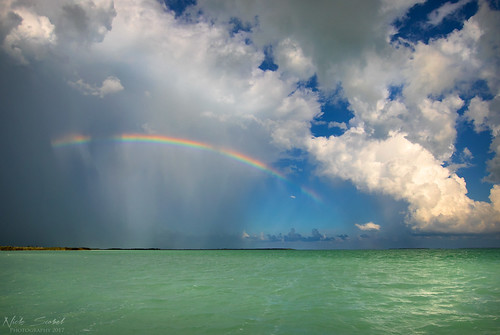 |
| Thunderstorms Over Florida Bay, Florida Keys |
The rainy season in south Florida provides a unique challenge when conducting field work by boat, as there is no place hide. Being from the midwest, storms are fairly predictable and usually move from west to east. But here, depending on wind direction and conditions, storms can arise from any direction and often behave in an unpredictable manner. This large storm raged for a half hour before dissipating before reaching our location. Later on in the evening, we hunkered down for an hour as a large storm passed right over us. But most of the time, it's a beautiful setting to be doing research.
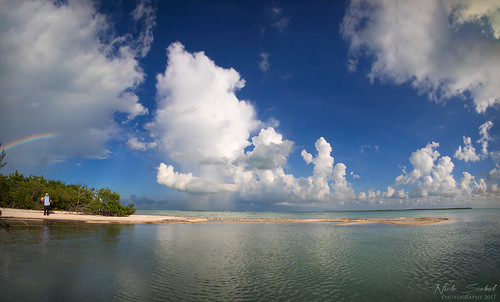 |
| Checking a nesting beach on a remote island in Florida Bay. |
A typical day of croc hatchling work entails driving to remote nesting locations to check on nests. We often see drags and scratching from females at nests that are about to hatch. Female crocs return often to nests to listen for the calls of their young, and often aid them in hatching and then taking them to small protected nursery waters where the hatchlings will be safer. Sometimes, we arrive to find the egg chamber dug open with egg shells strewn about the beach, with a few surprises inside the nest.
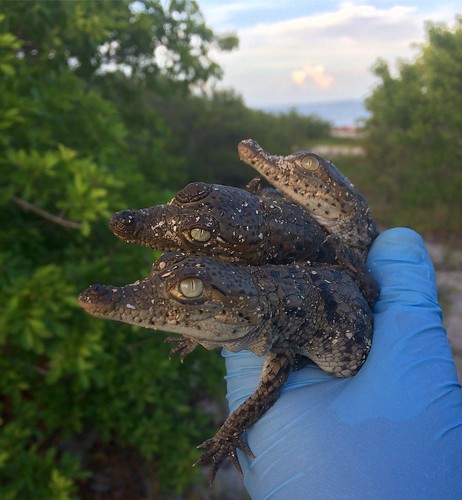 |
| Hatchling American Crocodiles (Crocodylus acutus) from a remote nest site in Everglades National Park. |
Hatchlings are measured, weighed, and given a unique identification number by a unique clip pattern on the tail scutes. This is part of a long term monitoring program, and we have even recaptured adult crocodiles that were marked in the 1980s as hatchlings! This allows us to track growth rates of crocodiles and monitor population trends.
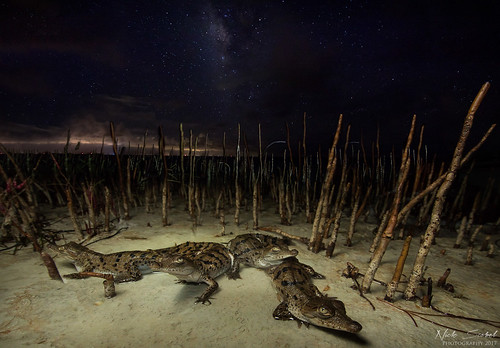 |
| A pod of hatchling American Crocodiles (Crocodylus acutus) explore a tidal salt flat under the stars in Florida Bay. |
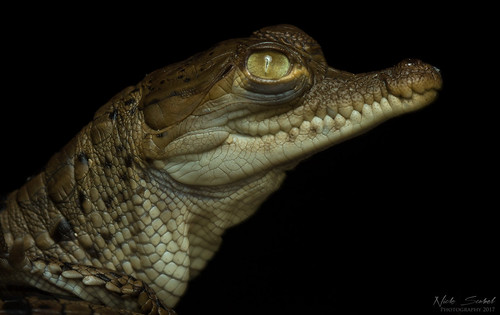 |
| Up close with a hatchling American Crocodile, note the small egg tooth at the tip of the snout. |
 |
| Ready to release a pod of hatchling crocs in Everglades National Park. |
So why does this work matter?
Crocodiles nearly became extinct in
the 1970s due to hunting, loss of habitat, and loss of freshwater flow to
coastal estuaries. Today, only 16% of hatchling crocs survive their first year.
Only a few from each nest ever make it to adulthood. Females can take 15 to 20
years to reach sexual maturity, highlighting the need for continued
conservation work on this species. Crocodiles are top tier predators, and any
changes to the health of coastal estuary ecosystems can is reflected in
population dynamics and body condition of adult crocs. Using this, we use
crocodiles as environmental indicators for Everglades
restoration. You can read more at: http://crocdoc.ifas.ufl.edu/publications/posters/statusalligatorcrocodile/







Thanks for helping raise awareness about Florida's ecosystem(s)...
ReplyDelete